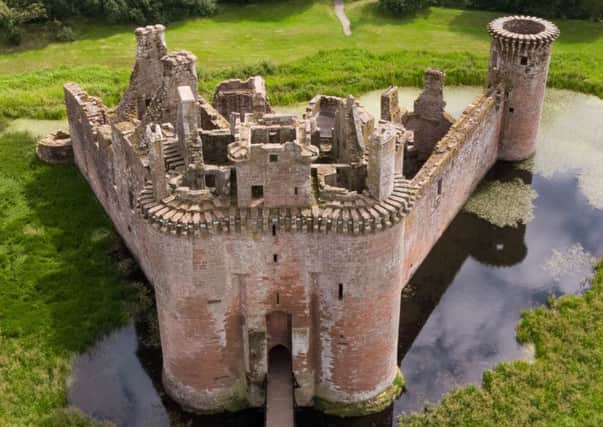Scotland’s tiniest and most unusual castles celebrated in new book


Tiny Castles by Dixe Wills, which celebrates Britain’s “most interesting diminutive castles”, includes 20 Scottish buildings such as Scalloway Castle in Shetland and Cubbie Roo’s Castle in Orkney – built by a Norse chieftain in the times when the islands were part of Norway.
The book is a follow-up to Wills’ Tiny Britain, published last year, which looked at Britain’s smallest attractions, from a museum in a phone box to a theatre with just 55 seats.
Advertisement
Hide AdAdvertisement
Hide AdThe publication gives a detailed history of each of the castles, from the battles in which they were involved to the unique ways they were designed.
Wills said: “I’ve spent years travelling the length and breadth of Britain and have unearthed what I believe are the nation’s finest smaller castles.
“While some are well known, many of them are hidden away, visited by only the most persistent of off-piste trippers and castle cognoscenti.”
The book highlights some of the least-known castles in Scotland from Orkney to the Borders, including MacLellan’s Castle, situated “at the end of a street”, next to shops and houses in Kirkcudbright.
The book said: “While many of Scotland’s choicest tiny castles are in out of the way places or spectacular locations, framed by mountains and lochs, MacLellan’s Castle seems almost suburban.”
It also explains the history of Orchardton Tower, which was built in 1456 by John Cairns and is the only round tower house in Scotland.
However, while some of the castles are perhaps smaller than others, but are only described as “tiny” at a stretch, they make up for it in other unique features.
Caerlaverock Castle in Dumfries, which is made out of red sandstone, was built on a triangle by Sir Aymer Maxwell around 1270.
Advertisement
Hide AdAdvertisement
Hide AdThe book explains the only other triangular castle known of – Fortezza di Sarzanello in Italy – was constructed in 1320, some 50 years later.
One castle that can be classed as small is the squat tower of Portencross Castle in North Ayrshire, which stands on the rocks of a short and low headland between a long beach and a small harbour.
Craigievar Castle in Aberdeenshire was visited by Queen Victoria and was painted its distinctive pink colour in 1823 when an architect decided the building’s harl should “match the colour of the granite moulding”.
A spokeswoman for VisitScotland said: “Scotland’s castles are renowned across the world.
“They are an iconic and integral part of the country’s history and culture and one of the top reasons visitors give for coming to Scotland.
“Around 60 per cent of people visit a castle or historic home during their stay, with this jumping to 88 per cent for long-haul market visitors.
“There is something unique and special about every single one and each has their own significant story to tell, which is why it’s great to have some of the lesser known, smaller castles highlighted in this book.”
The spokeswoman added: “This continued interest contributes to Scotland’s ongoing tourism success story, which is the heartbeat of the Scottish economy and touches every community, generating income, jobs and social change.”
‘Tiny Castles’ by Dixe Wills will be published next month by AA Publishing at £16.99